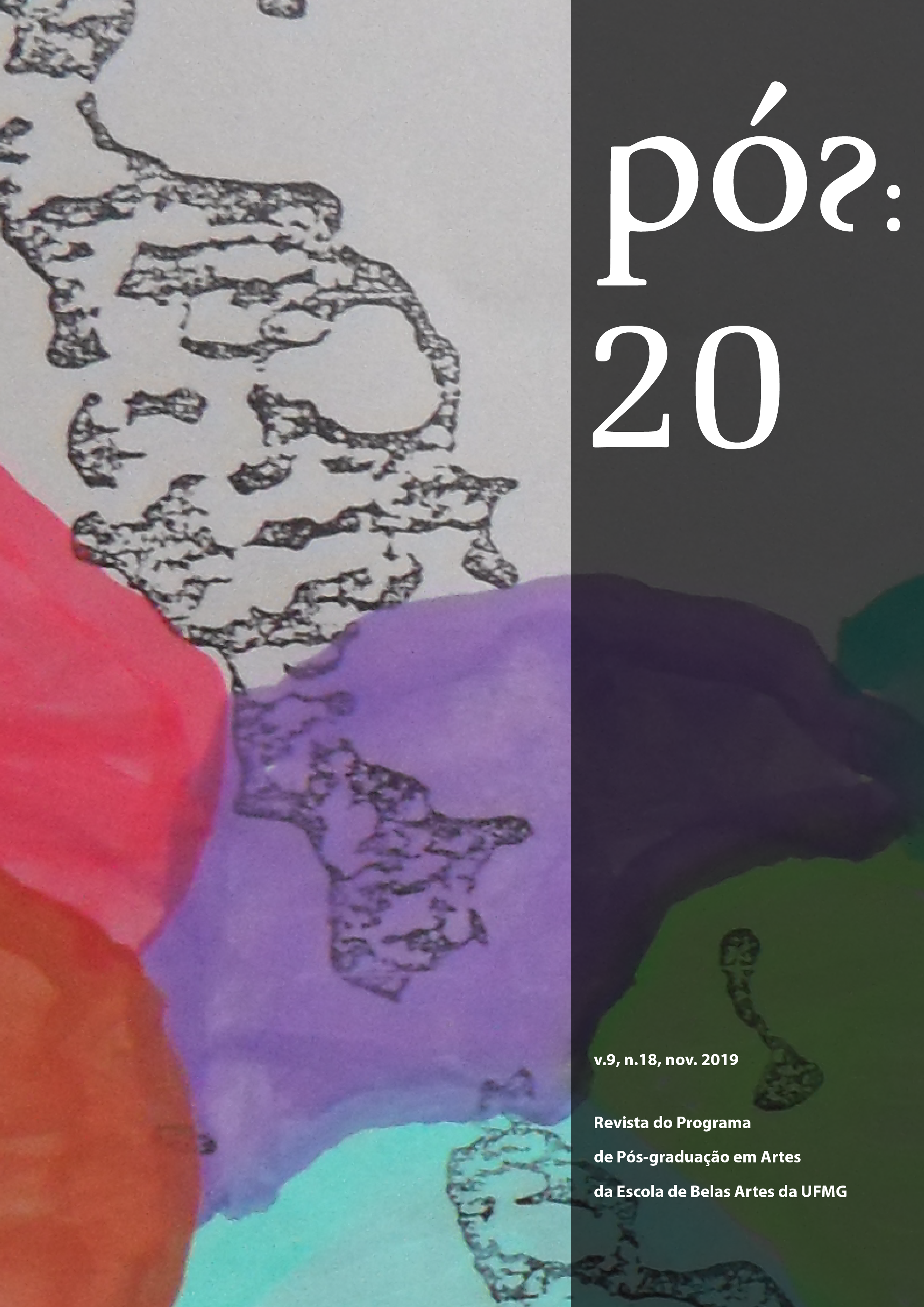Artes y bienestar psicológico
Las artes como intervenciones positivas
DOI:
https://doi.org/10.35699/2237-5864.2020.20711Parole chiave:
Psicología Positiva, Artes, Intervenciones positivas, Bienestar psicológico, TerapiaAbstract
La relación entre artes y bienestar ha sido reconocida en numerosos estudios, incluyendo aquellos realizados en ámbitos de la salud, la terapia o la educación. Desde la música a las artes visuales, pasando por el cine o la fotografía, las artes han sido y son recursos de primer orden no solo para la curación, sino sobre todo para la prevención y promoción de la salud y el bienestar psicológico. En este artículo, partiendo del reconocimiento del valor terapéutico de las artes, identificamos sus conexiones con los cinco elementos del modelo teórico de bienestar propuesto por Martin Seligman (PERMA) y sugerimos que las artes deben ser reconocidas como intervenciones positivas bajo el amplio paraguas de la Psicología Positiva.
Riferimenti bibliografici
All-Party Parliamentary Group on Arts, Health and Wellbeing (2017). Creative Health: The Arts for Health and Wellbeing. London: APPG. Recuperado de https://www.culturehealthandwellbeing.org.uk/appg-inquiry
Arts Council England (2007). The Arts, Health and Wellbeing. London: Arts Council England.
Ascenso, S., Perkins, R. & Aaron, R. (2018). Resounding Meaning: A PERMA Wellbeing Profile of Classical Musicians. Frontiers in Psychology, 9, article 1985.
Blomdahl, C. et al. (2013). A realist review of art therapy for clients with depression. The Ars in Psychotherapy, 40, 322-330.
Caspi, O. & Weihs, K. (2019). The role of emotional processing in art therapy (REPAT) for breast cancer patients. Journal of Psychosocial Oncology, 37(5), 586-598.
Chambala, A. (2008). Anxiety and Art Therapy: Treatment in the Public Eye. Art Therapy. Journal of the American Art Therapy Association, 25(4), 187-189.
Chlan, L. (1998). Effectiveness of a music therapy intervention on relaxation and anxiety for patients receiving ventilatory assistance. Heart & Lung, 27(3), 169-176.
Csikszentmihalyi, M. (2017). Aprender a fluir. Chicago: Editorial Kairos.
College of Medicine (2019). The arts are an ‘indispensable tool’ in helping the NHS, Matt Hancock tells The King’s Fund. College of Medicine and Integrated Health. https://collegeofmedicine.org.uk/the-arts-are-an-indispensable-tool-in-helping-the-nhs-matt-hancock-tells-the-kings-fund
Darewych, O. & Bowers, N. (2018). Positive arts interventions: creative clinical tools promoting wellbeing. International Journal of Art Therapy, 23(2), 62-69.
Dieterich-Hartwell, R. (2017). Dance/movement therapy in the treatment of post-traumatic stress: A reference model. The Arts in Psychotherapy, 54, 38-46.
Gable, S.L. & Haidt, J. (2005). What (and why) is positive psychology. Review of General Psychology, 9, 103-110.
Gussak, D. (2007). The Effectiveness of Art Therapy in Reducing Depression in Prisons Populations. International Journal of Offender Therapy and Comparative Criminology, 51(4), 444-460.
Hefferon, K. & Boniwell, I. (2014). Positive psychology: Theory, research and applications. London: OUP.
HM Government (2018). A connected society. A strategy for tackling loneliness. Londres: Department for Digital, Culture, Media and Sport. https://assets.publishing.service.gov.uk/government/uploads/system/uploads/attachment_data/file/750909/6.4882_DCMS_Loneliness_Strategy_web_Update.pdf
Kurtz, J.L. & Lyubomirsky, S. (2013). Happiness promotion: Using mindful photography to increase positive emotion and appreciation. En J.J. Froh & A.C. Parks (Eds.), Activities for teaching positive psychology: A guide for instructors (pp. 133-136). DC: American Psychological Association.
Johnson, J. et al. (2020). A Community Choir Intervention to Promote Well-Being Among Diverse Older Adults: Results from the Community of Voices Trial. The Journals of Gerontology, Series B, 75(3), 549-559.
Landy, R. (2010). Drama as a means of preventing post-traumatic stress following trauma within a community. Journal of Applied Arts and Health, 1(1), 7-18.
Leckey, J. (2011). The therapeutic The therapeutic effectiveness of creative activities on mental well‐being: a systematic review of the literature. Psychiatric and Mental Health Nursing, 18(6), 501-509.
Lee, J.; Krause, A.; Davidson, J. (2017). The PERMA well-being model and music facilitation practice: Preliminary documentation for well-being through music provision in Australian schools. Research Studies in Music Education, 39(1), 73-89.
Lomas, T. (2016). Positive art: Artistic expression and appreciation as an exemplary vehicle for flourishing. Review of General Psychology. 20 (2), 171-182.
Mastandrea, S., Fagioli, S. & Biasi, V. (2019). Art and Psychological Well-Being: Linking the Brain to the Aesthetic Emotion. Frontiers Psychology. DOI https://doi.org/10.3389/fpsyg.2019.00739
Mental Health Foundation (2011). An Evidence Review of the Impact of Participatory Arts on Older People. London: The Baring Foundation. https://www.mentalhealth.org.uk/sites/default/files/evidence-review-participatory-arts.pdf
OMS (1946). Constitución de la Organización Mundial de la Salud: Principios. http://origin.who.int/about/mission/es/
Robinson, K., & Aronica, L. (2010). El elemento. Buenos Aires: Grijalbo.
Rusk, R.D. & Waters, L.E. (2013). Tracing the size, reach, impact, and breadth of positive psychology. The Journal of Positive Psychology, 8(3), 207-221.
Seligman, M. (2011). Flourish. A New Understanding of Happiness and Wellbeing -and how to achieve them. London: Nicholas Brealey Publishing.
Selle, E. & Silverman, M. (2019). Cardiovascular patients’ perceptions of music therapy in the form of patient-preferred live music: Exploring service user experiences. Nordic Journal of Music Therapy, 29(1), 57-74.
Steger, F., Shim, Y., Rush, B.R., Brueske, R.A., Shin, J.Y. & Merriman, L.A. (2013). The mind´s eye: A Photographic method for understanding meaning in people’s lives. The Journal of Positive Psychology 8(6), 530-542.
Sin N. & Lyubomirsky S. (2009). Enhancing well-being and alleviating depressive symptoms with positive psychology interventions: a practice-friendly meta-analysis. J Clin Psychol, 65(5), 467–487.
Swaminathan, S. & Schellenberg, G. (2015). Current Emotion Research in Music Psychology. Emotion Review, 7(3), 189-197.
Tierranuestra (s.f.). Sonidos de la tierra. https://www.sonidosdelatierra.org.py/orquestas.php
Downloads
Pubblicato
Versioni
- 2020-12-01 (2)
- 2020-11-29 (1)
Come citare
Fascicolo
Sezione
Licenza
Copyright (c) 2020 Andrea Gilraldez

Questo lavoro è fornito con la licenza Creative Commons Attribuzione - Non commerciale 4.0 Internazionale.
Autores que publicam nesta revista concordam com os seguintes termos:
- Autores mantém os direitos autorais e concedem à revista o direito de primeira publicação, com o trabalho simultaneamente licenciado sob a Creative Commons Attribution-NonCommercial 4.0 International License que permite o compartilhamento do trabalho com reconhecimento da autoria e publicação inicial nesta revista.
- Autores têm autorização para assumir contratos adicionais separadamente, para distribuição não-exclusiva da versão do trabalho publicada nesta revista (ex.: publicar em repositório institucional ou como capítulo de livro), com reconhecimento de autoria e publicação inicial nesta revista.
- Autores têm permissão e são estimulados a publicar e distribuir seu trabalho online (ex.: em repositórios institucionais ou na sua página pessoal) a qualquer ponto antes ou durante o processo editorial, já que isso pode gerar alterações produtivas, bem como aumentar o impacto e a citação do trabalho publicado
- É responsabilidade dos autores a obtenção da permissão por escrito para usar em seus artigos materiais protegidos por lei de Direitos Autorais. A Revista PÓS não é responsável por quebras de direitos autorais feitas por seus colaboradores.











